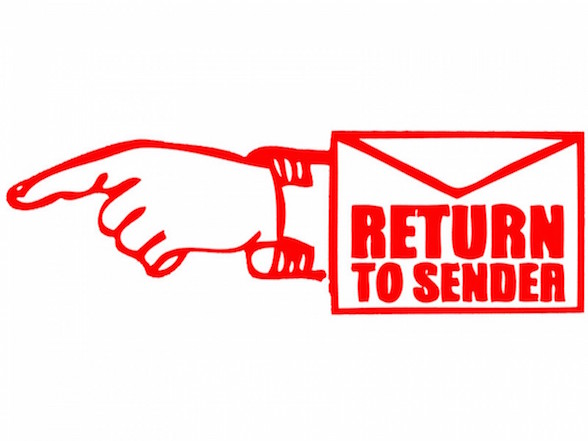There are two keys to successful inventory management: buying the right number of books and knowing what books to return. There is an art to both that is grounded loosely in hunches and some data management. Books are one of the few retail items that can be returned, often without penalty, to the publisher or distributor. The ability to return books allows stores to take chances on books they might not otherwise bring into their stores. It also allows for stocking up on event books without under-buying for fear of being stuck with extra books. But returns are not without cost, or hassle.
We are blessed to have Darrilyn as our returns guru. As the rules for returns have gotten tighter and  tighter, books can only be returned to where you bought them (in the olden days you could return books to a publisher regardless of where they were purchased), books purchased from distributors now can only be returned to them with a restocking fee, and books that have been declared out of print can’t be returned at all. Throw in the ever-changing publishing landscape with imprints going to different publishers and it can make for the need for a flow chart.
tighter, books can only be returned to where you bought them (in the olden days you could return books to a publisher regardless of where they were purchased), books purchased from distributors now can only be returned to them with a restocking fee, and books that have been declared out of print can’t be returned at all. Throw in the ever-changing publishing landscape with imprints going to different publishers and it can make for the need for a flow chart.
Darrilyn has a notebook that’s just for returns. She updates return addresses (this constantly changes as well) and keeps track of where books were purchased and when the return deadlines are. Then she organizes them in the back room by publisher and distributor. It’s an incredibly efficient system that allows us to make returns speedily and according to which publisher we could really use the credit with. There is little that makes me happier than seeing my monthly invoices shrink when I see the return credits.
Some returns are obvious. Returning hardcovers when the book becomes available in paperback is an easy one. Also, there are books that stores take a risk on which turn out to be misses. Knowing when the window is for returning new books is also enormously helpful. Every publisher has a different rule: books cannot be returned for three months after publication, some can’t be returned for six months. Darrilyn knows what those windows are without looking them up. And here’s the thing about doing returns weekly: you stay on top of your inventory and this directly helps the bottom line.
The art of returns comes into play when we try to decide if a book has been earning its shelf space. This is always a difficult decision. Some books do not sell well, but you cannot not have them on the shelf. Caldecott and Newbery winners often present a challenge in this regard. A store wants to have a well-stocked awards sections, but let’s be honest, some of these books just won’t sell. But not having them makes your store look bad. There are classics that people look for with in stores even if that customer won’t buy those particular books. It’s all about the balance between impressive credibility and business sense.
We’ve all had buying mistakes that wind up as returns. Booksellers, what was your biggest over-buying mistake? For us it still has to be a case of a book that came with a magnetic beard and a wand that allowed the reader to create any shape beard they wanted. We loved it and thought it would be a great thing, but sadly, our customers did not share this attitude. We got stuck with them because we missed the window (this was years ago, before we had Darrilyn). And off to the sale bin they went.

I have the honor of being the “returns gal” at my small store. (which is an outpost of a larger store). We are extremely aggressive about it and also do returns weekly. I must say it helps with our bottom line at the end of the month (both in billing and profits) Let’s not forget its value in creating space for other books. Our store is small and every inch is precious; so getting another shelf or corner is important. It amazes me that all bookshops don’t have a dedicated returns person…